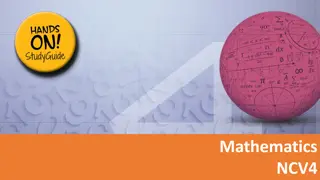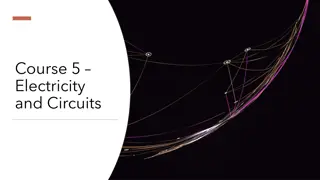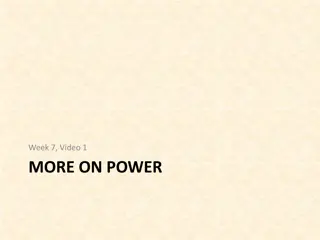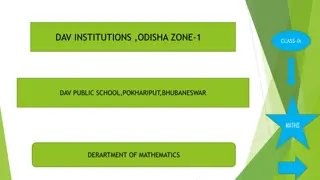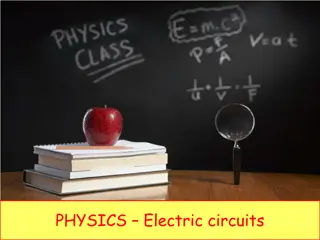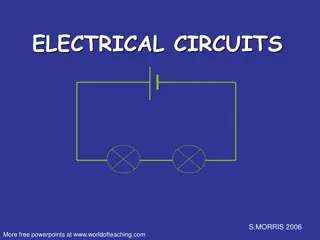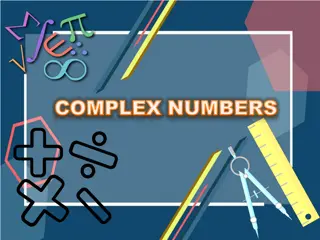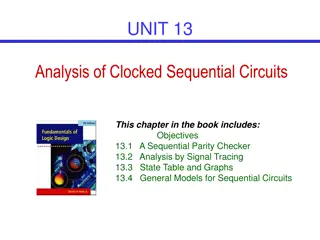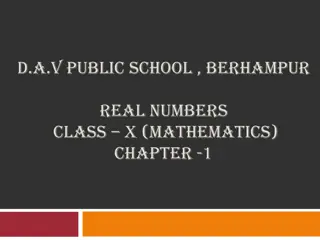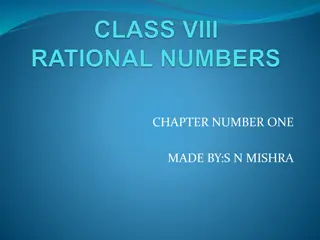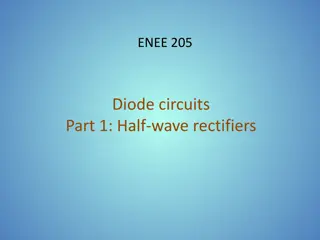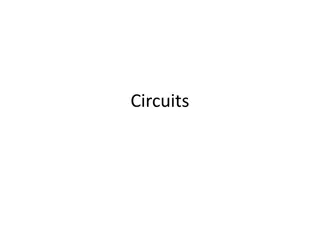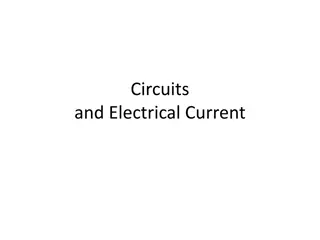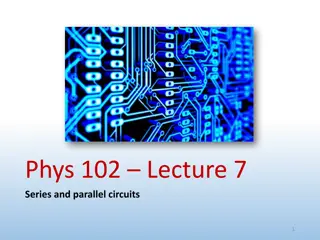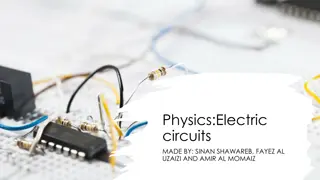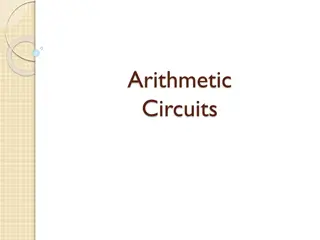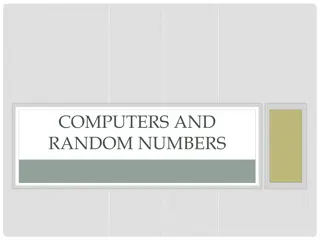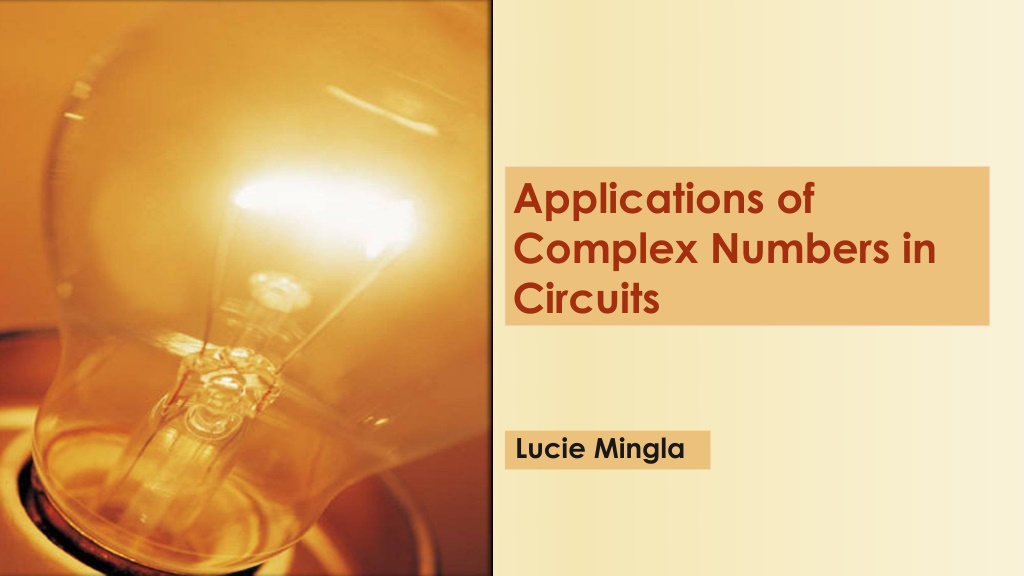
Understanding Complex Numbers in Electrical Circuits
Explore the applications of complex numbers in circuits, comparing AC and DC currents, analyzing impedance in AC circuits, and solving problems using complex numbers in physics. Learn how electrical engineers utilize multi-dimensional quantities to represent frequency and phase shifts in alternating current circuits.
Download Presentation

Please find below an Image/Link to download the presentation.
The content on the website is provided AS IS for your information and personal use only. It may not be sold, licensed, or shared on other websites without obtaining consent from the author. If you encounter any issues during the download, it is possible that the publisher has removed the file from their server.
You are allowed to download the files provided on this website for personal or commercial use, subject to the condition that they are used lawfully. All files are the property of their respective owners.
The content on the website is provided AS IS for your information and personal use only. It may not be sold, licensed, or shared on other websites without obtaining consent from the author.
E N D
Presentation Transcript
Applications of Complex Numbers in Circuits Lucie Mingla
WHATS THE DIFFERENCE BETWEEN ALTERNATE CURRENT AND DIRECT CURRENT Electrical current is the flow of charged particles, or specifically in the case of AC and DC, the flow of electrons The fundamental difference between AC and DC is the direction of flow. DC is constant and moves in one direction. The graph of DC current looks like a flat line. AC changes over time in an oscillating repetition. Flow of AC on a graph makes a sinusoid or wave- like pattern. The current moves back and forth and that is what gives AC its name. A typical battery has negative and positive terminals, and the electrical charge moves in one direction from one to the other at a steady rate. The graph is a straight line. DC Example The lamp next to your bed, for example, uses AC. This is because the source of the current came from far away, and the wave-like motion of the current makes it an efficient traveler. AC Example if you re reading this on a laptop, you are using both kinds of current. The plug that goes into your computer delivers a direct current to the computer s battery, but it receives that charge from an AC plug that goes into the wall. The little block that s in between the wall plug and your computer is a power adapter that transforms AC to DC. DC And AC
Complex numbers/Alternating-Current Circuits (AC) Basic laws work the same for DC &AC V=I Z where V is voltage, I is current, and Z is impedance. When electrical engineers analyzed direct current circuits, they found that quantities of voltage, current and resistance are one- dimensional scalar quantities. According to electrical engineers, in the alternating current circuits the quantities of voltage, current and resistance ( impedance in AC) alternate in direction and amplitude which possess other dimensions(frequency and phase shift). In order to analyze AC circuits, it became necessary to represent multi-dimensional quantities. Complex numbers were used to express the two dimensions of frequency and phase shift at one time. a + b j.
Applications of complex numbers in a circuit (Adding and multiplying) P.1. The impedance in one part of a series circuit is 3 +7j ohms, and the impedance in another part of the circuit is 8 -9j ohms. Find the total impedance in the circuit. Answer: 11 -2j ohms (Both impendences, same phase) Solution: (3 +7j)+(8 -9j)= (3+8)+(7-9)j=11 -2j
Other examples of using complex numbers to solve problems in physics (circuits) P. 2. The current in a circuit is 8 + 6j amps, and the impedance is 3 -j ohms. What is the voltage? (V=I R) P. 3. The voltage in a circuit is 15 + 4j volts and the impedance is 2 +3j ohms. What is the current? I=? ?=??+?? =?? ???+?? ???? ?? (??)? =?? ???+?? ??+?? (? ??) (?+??)(? ??) V=( 8+6j)(3-j)= 24-8j+18j-6j = 24+10j-6(-1)= 24+6+10j=30+10j ?+??= ? ?( ?)=?? ??? =?? ?? ?? ??? ??
PHASOR DIAGRAM OF SERIES RLC CIRCUITS The voltage across the resistor is drawn in horizontal axis and its considered as real quantity Resistor The voltage across the inductor is drawn in vertical axis and its considered as positive imaginary quantity Inductor The voltage across the capacitor is drawn in vertical axis and its considered as negative imaginary quantity Capacitor
In RLC circuits the current is the same across the circuit. Voltage and Impendence have the same phase
1 3 ? 5
i ? -3

